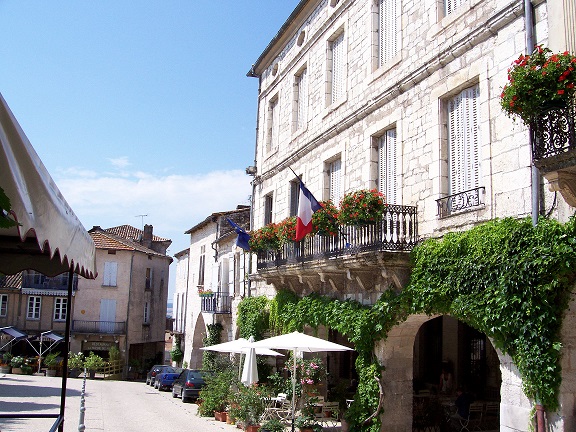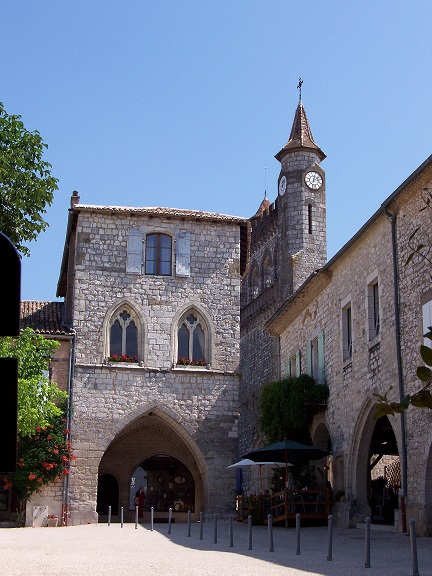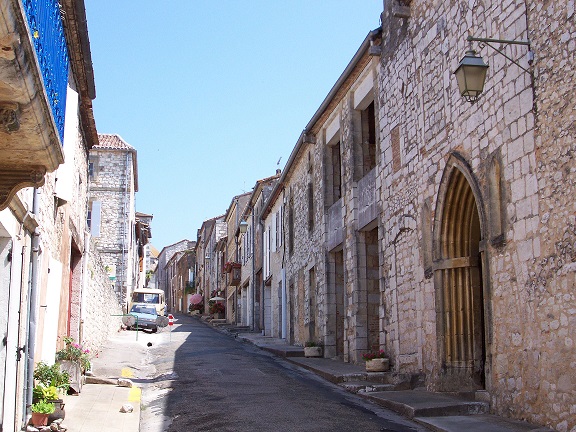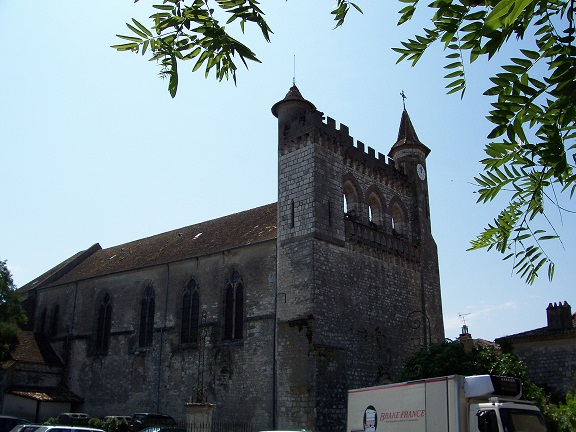Monflanquin
Located on a hill overlooking the Lède valley, on the border of Périgord, Quercy and Guyenne, Monflanquin is ranked among the most beautiful villages in France.

HISTORY
In 1252, Guillaume Amanieu, Lord of Calviac, ceded the mountain of Monflanquin to Alphonse de Poitiers. The latter founded a 13th century Bastide there. The agreement gives rise to a contract which provides for a sharing of the revenues of the new city between the two partners. In 1256, Alphonse de Poitiers began the foundation of the bastide. In 1269, the foundation charter was confirmed. On the death of Alphonse de Poitiers after his wife, Jeanne de Toulouse, daughter of Raymond VII, without an heir, his land entered the royal domain of Philippe III. In 1279, Monflanquin became one of the twelve bailiwicks of Agenais. The Archbishop of Bordeaux, Bertrand de Got, visited the city in 1304. He was elected pope the following year under the name of Clément V. The bastide having passed into the English movement, King Edward III confirmed the privileges of the city in 1318. In 1374, the inhabitants of Monflanquin help the army of the king of France which goes towards Tonneins to drive out the English of Agenais. On August 31, 1574, Guy de Montferrand1, Lord of Langoiran, Governor of Périgord "for those of the reformed religion" and Geoffroy de Vivans took the town with their 2000 men and took 125 gentlemen prisoners. It was the district capital from 1790 to 1795.
Places and Monuments
* The Church of Saint-André: The church was founded between 1250 and 1290. It has retained the base of its walls and the portal from this period. It was part of the city wall so its bedside was fortified. The vaults of the nave having collapsed, the church is restored in 1715, the chevet is taken again. The vaults were rebuilt in 1864. The bell tower took on its fortified appearance in 1923. The apse is perforated to place stained glass windows. The church was classified as a historic monument on July 16, 1925.
* The so-called Black Prince house on Place Foch, built in the XIVe century. The Black Prince, who defeated King John II the Good at the Battle of Poitiers, is said to have stayed there.
* The Château de Roquefère. The castle was bought in 1280 by Jean Ier de Grailly, Seneschal of Gascony and Agen, from Hugues de Castelmoron. On July 7, 1305, Bertrand de Got, Archbishop of Bordeaux, slept in the castle. Jean de Grailly cedes the seigneury of Roquefère with the castle to Jean Chandos, his life, provided that the seigneury returns to him or to his heirs after his death. When Jean de Grailly died in 1376, childless, the castle became the subject of a long conflict between the Hébrard family and the family of Blanche de Foix, mother of Jean de Grailly. When Jean Chandos died, Jean and Jacmet Hébrard and Guillon de La Martinie had taken possession of the château without rights. In 1470, by decision of Charles, Duke of Guyenne, the castle again became the property of Jean de Foix, Count of Caudale, captal of Buch, son of Gaston de Foix, had ceded to Jean Chandos, on condition that he returned to him when he died. His daughter married Jacques de Chaussade and took possession of the seigneury in 1495 by decree of the Parliament of Bordeaux. By marriage, in the first half of the XVIe century, the castle became part of the La Mothe family. Jean II de Rochefort, marquis de Théobon (the castle of Théobon is in the commune of Loubès-Bernac), captal of Puychagut, lord of Monneins, Courouneau (the castle is in the commune of Margueron), ... gets married December 8, 1637 with Anne de La Mothe, lady of Roquefère and Lespinassat. He is lieutenant-general of the army of Condé in Guyenne. He made the castle of Roquefère a base of operations for the army of the Prince of Condé during the Fronde. Louis Pons, married to Guyonne de Rochefort, sells the castle to Jean Fournie Gorre, doctor of the Duke of Orleans, native of Monflanquin. In 1781, the castle belonged to Charles Raymond de Berail.
Monflanquin other photos >> click !


Here is an official link, click and enjoy your visit !



Personnalités liées à la commune
* Pierre Saint-Amant, 19th century chess player.
* Irène Lagut, painter.
* Jean Henri Becays Ferrand, general of the French Revolution, whose name is engraved under the Arc de triomphe de l'Étoile (4th column).
* Peggy Zlotkowski, Miss France 1989.
* Pascal Portes, professional tennis player, Davis Cup semi-finalist in 1980.

